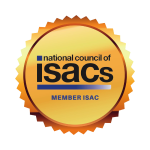Terbium Labs has released a report analyzing nearly 30,000 “how-to” guides for committing cyber fraud available on the Dark Web. These online documents typically include instructions on specific fraud capabilities such as account takeover, phishing, cashing out, doxing, synthetic fraud, and account creation. They could feature instructions, personal notes from the author on their experiences of what works and what doesn’t, social engineering and technical advice, and more. While the researchers found many shortcomings in the guides – for example, 75 percent of those analyzed were found to be duplicates which have simply been repackaged and resold – the information could still be useful for organizations trying to get inside the fraudster’s head. It could even be used by risk teams to help evaluate current fraud controls and detection services, for example. Terbium Labs also ran a check on the appearance of personal and financial information in the guides to see what was of greatest interest to fraudsters. Email addresses came out top, ahead of payment card data and other personally identifiable information. Read the report at Terbium Labs.
You are here
Related Resources
Dec 12, 2024 in Cybersecurity, in Federal & State Resources, in Security Preparedness
Dec 12, 2024 in Cybersecurity, in OT-ICS Security, in Security Preparedness
Dec 12, 2024 in Cybersecurity, in OT-ICS Security, in Federal & State Resources

